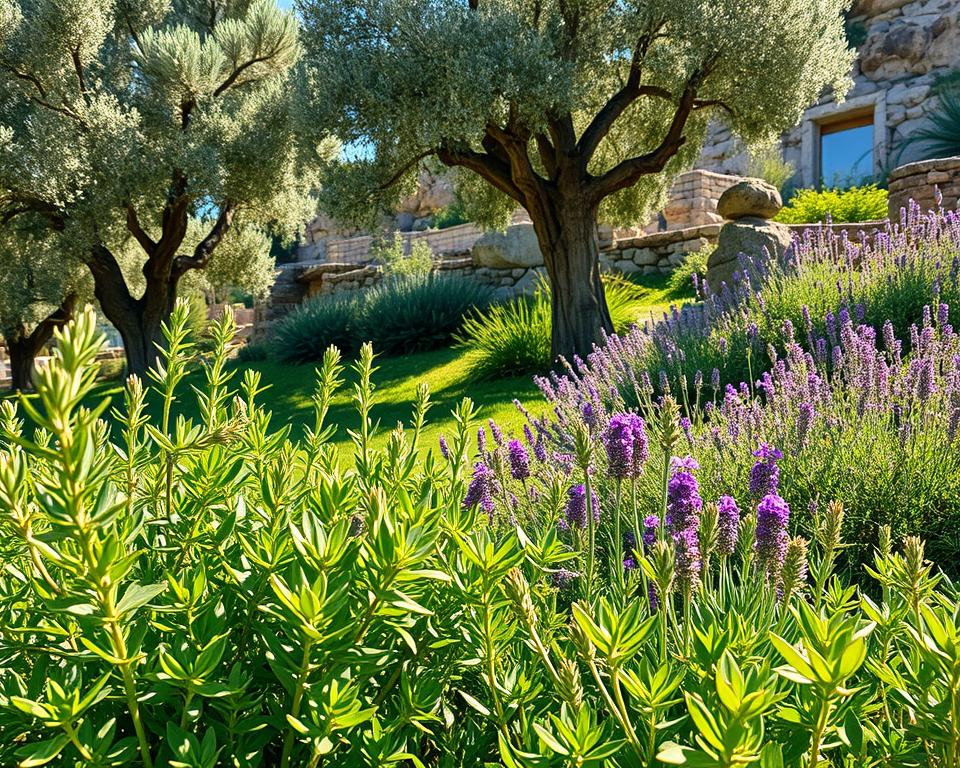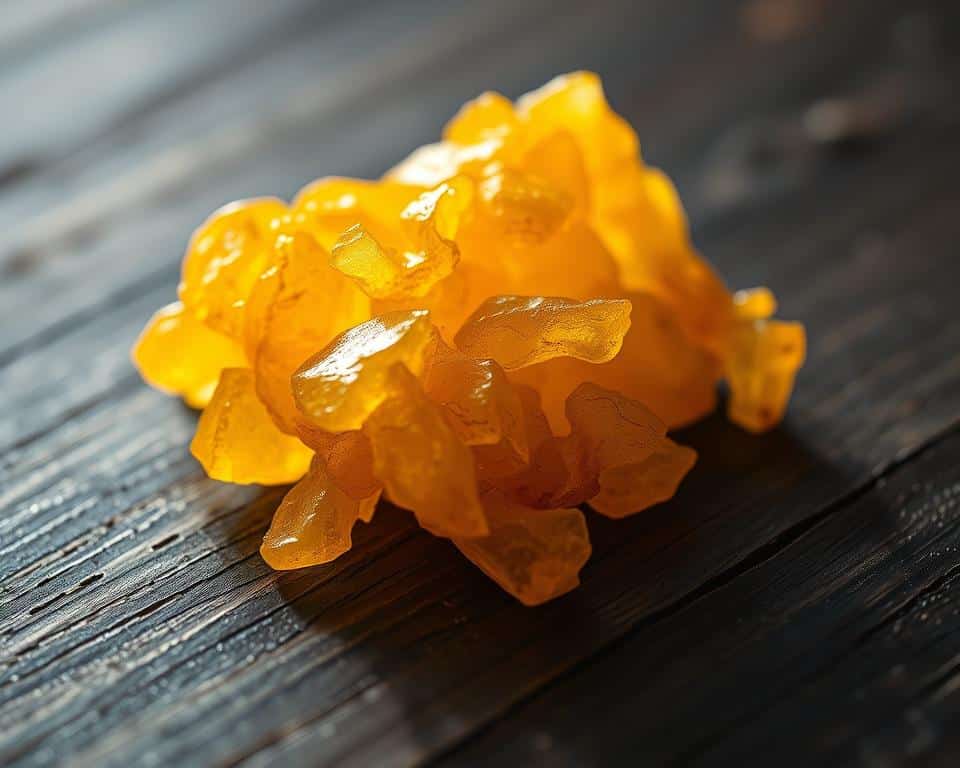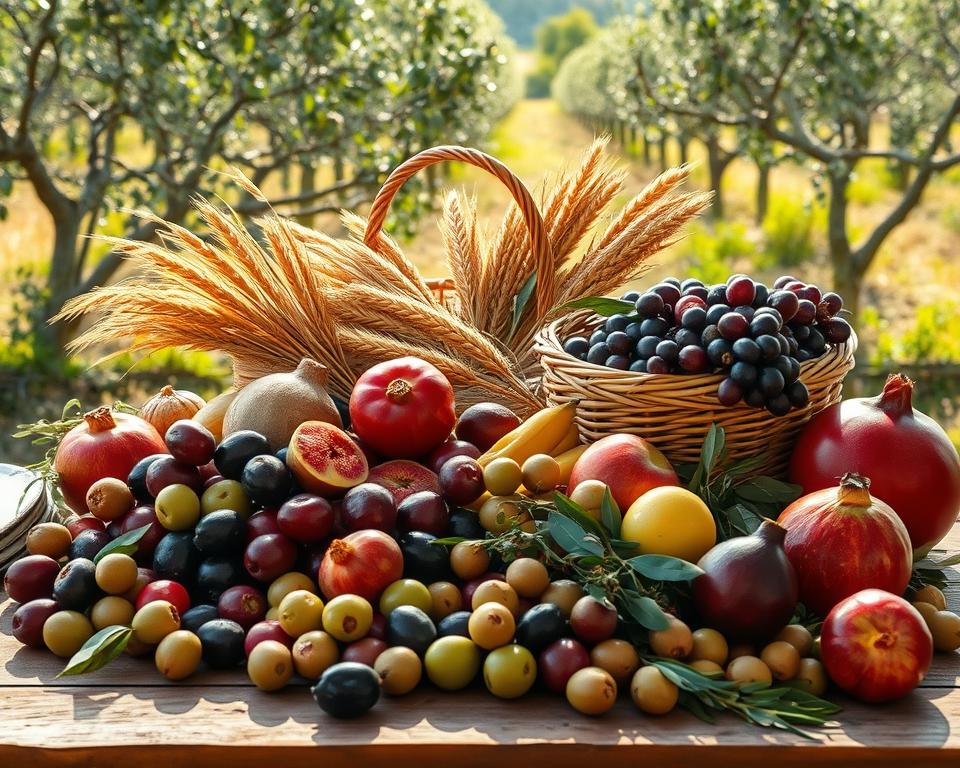“God heals, provides, and sustains through what He has made,” I often reflect as I study Scripture and tradition. This guide looks at plants that Scripture names and the role they played for people long ago.
I write from faith and study. Psalms 104:14 notes God gives “herbs for the service of man,” and scholars pinpoint a few healing species used across biblical times.
Archaeology and texts show trade in resins and spices like frankincense and cinnamon. I will explain which items link to healing, which appear in ritual or food, and how use carried on through years.
Key Takeaways
- I explain key plants that Scripture links to healing and daily life.
- God’s word anchors our view of care and health.
- Only a few items are explicit healers; others serve ritual, food, or scent.
- History shows continuous use across regions and years.
- Short entries will help you scan, study verses, and apply what you learn.
Scripture roots and purpose of healing plants
Careful study shows that plant names in Scripture reflect daily life and trade across ancient times.

Scholars like Dafni and Böck note translation errors and shifting languages. This affects how we identify plants and their uses.
I explain plain purposes: food, worship, fragrance, offerings, and at times relief for the sick.
- Daily life: People across the region used plants for meals and care.
- Shared knowledge: Trade linked Egypt, Mesopotamia, and the Levant, shaping what was available.
- Careful reading: Names require philology so history and Scripture align correctly.
Matthew 23:23 calls attention to tithes like mint and anise and cumin while urging focus on the weightier matters law. That guidance helps us honor God’s word without elevating uses beyond their place.
I encourage readers to view these gifts as useful and God-given, and to test practices by faith, truth, and obedience.
Herbs in the Bible for food, medicine, and incense
Scripture names several plants used as foods, remedies, and scents across ancient lands.

Aloe
John 19:39 notes Nicodemus brought myrrh and aloes for burial. Ancient writers record aloe for burns and skin care. People today still apply gel for rashes and sunburn.
Anise
Matthew 23:23 lists mint, anise, and cumin as tithed items. Anise appears as a seed brewed into tea to ease digestion and gas. Seeds are simple, common remedies across cultures.
Balm of Gilead
Genesis 37:25 shows traders carrying balm among goods. Scholars list this resin as a valued medicine for sores. It served trade routes for years and kept a strong healing reputation.
Bitter greens and bitter seeds
Exodus 12:8 commands bitter herbs at Passover as part of the meal. Bitter leaves and seeds also aid digestion and are used as foods today. Their flavor links memory and health in ceremonies.
Cinnamon and cumin
Exodus 30:23 names cinnamon for anointing oil and perfume. People valued bark for scent and flavor, and researchers study effects on glucose.
Isaiah 28:25 mentions cumin as a seed used for food. Modern studies examine cuminaldehyde and related compounds, and black cumin draws interest for active molecules.
Frankincense, coriander, and a seed image
Matthew 2:11 lists frankincense as an offering and incense. It also served as perfume and in worship.
Exodus 16:31 uses coriander to describe manna, linking small seeds to daily foods. A later section will expand the mustard seed image of faith.
“I recommend reading Scripture and history together to see how these gifts served people across times and lands.”
| Item | Scripture | Use then | Use today |
|---|---|---|---|
| Aloe | John 19:39 | Topical for skin | Gel for burns, rashes |
| Anise (seed) | Matthew 23:23 | Flavor, tithe | Tea for digestion |
| Balm of Gilead | Genesis 37:25 | Resin for sores | Topical balm, historical remedy |
| Cinnamon | Exodus 30:23 | Anointing oil, spice | Flavor, studied for glucose |
Explicit healing plants in Scripture and their roles
Scripture names a few plants that served clear healing roles in daily care.
Dafni and Böck (2019) list five explicit medicinal species: fig, nard, hyssop, balm of Gilead, and mandrake. I note each with a Scripture reference and a simple role.
Hyssop — cleansing rites and respiratory support
Hyssop appears in rites of cleansing. People used it for household purification and to help the chest. Some make tea or warm gargles today with care.
Fig — poultice for sores (II Kings 20:7)
II Kings 20:7 records a fig poultice applied to Hezekiah’s boil. This is a clear example of medicine used for wounds.
Nard (spikenard) — perfume and anointing
Song of Solomon 1:12 and Gospel accounts show nard as costly oil for anointing. It is also known for scent and ceremonial care.
Mandrake — noted for reputation
Genesis 30:14 records mandrake with a strong reputation. Scripture records its use without endorsing every claim about effects.
Balm of Gilead — symbol and resin (Jeremiah 8:22)
Jeremiah asks, “Is there no balm of Gilead?” This resin served as a healing symbol and as a practical ointment in history.
“We trust God first for healing and use plants as tools, not as ultimate sources of health.”
| Plant | Scripture | Role then | Use today |
|---|---|---|---|
| Hyssop | Psalms & ritual texts | Cleansing, expectorant | Tea, warm gargle (careful use) |
| Fig | II Kings 20:7 | Poultice for sores | Topical dressings in folk practice |
| Nard (spikenard) | Song of Solomon 1:12; Gospels | Perfume, anointing oil | Fragrant oil for anointing |
| Mandrake | Genesis 30:14 | Reputed tonic | Historical note; caution advised |
| Balm of Gilead | Jeremiah 8:22 | Resin used for sores; symbol of healing | Topical balms; symbolic use today |
Spices and resins cited for sacred use and scent
Scripture records fragrant resins and spices used in worship and daily life. Matthew 2:11 names frankincense and myrrh as gifts to Jesus. Exodus 30 gives precise recipes for incense and oils for holy service.
Myrrh
Myrrh is a gum-resin long valued for anointing and embalming. It appears in Old and New Testament passages and was part of sacred blends.
Modern study notes antimicrobial and antiparasitic properties for myrrh. Scholars caution that historical use reflects ancient practice, not a promise of cure.
Saffron
Song of Solomon 4:14 lists saffron among prized scents. Saffron added color, perfume, and flavor in courts and homes.
Researchers study saffron for possible effects, but its chief role in Scripture is as a costly spice. Incense and oils served worship, and these spices were also used at home for scent and simple care.
Note: Exodus 30 shows God set exact directions for incense and anointing oils; read those recipes carefully before attempting any recreation.
- Key point: frankincense and myrrh anchor sacred aroma traditions.
- Trade and history brought these plants into Israel from distant lands.
- See these gifts as aids to worship and not as objects of superstition.
Seeds and grains with vivid biblical images
Simple seeds and common grains carry vivid images Jesus used to teach truth.
Mustard seed and faith (Luke 17:6)
Mustard seed is small yet shows great power when it grows. Jesus used this image to teach how faith can start tiny and become strong.
Modern researchers study compounds from mustard seed, and some work explores biological effects today.
Coriander and manna (Exodus 16:31)
Coriander appears as a familiar kitchen seed that helps readers picture manna. Its size and look make the comparison easy to imagine at meal time.
Grain, bread, and daily life
Grain and bread were staple food across ancient times. These plants stand as simple signs of God’s steady care for life.
- Use these images at family meals to connect faith and gratitude.
- Point: small things teach large truths.
Plants many people still use today
Across generations, common garden plants have served both meals and modest remedies. I share brief, practical notes so readers may learn without overreach.
Garlic — Numbers 11:5; heart and immune support
Garlic appears among foods in Numbers 11:5 with cucumbers and onions. Many people have used garlic for years as a familiar food that also supports heart and immune care.
Research notes certain properties that may affect blood pressure and cholesterol. Some people discuss these effects with a clinician before regular use.
Mint — Matthew 23:23; soothing tea for stomach
Mint appears as a tithe item and is still used as a calming tea. The leaves brew mild tea that many people report helps stomach comfort and IBS symptoms.
Simple form options—tea, fresh leaves, or a small tincture—fit modest living and easy home use.
“Foods can bless health when used wisely and brought before God in prayer.”
- I encourage reading labels and seeking trusted sources when you purchase products.
- Consider growing a small mint pot at home as a daily reminder of God’s care.
Incense blends and sacred oils in biblical times
Ancient worship used specific aromatic blends to mark God’s presence and call for reverence.
I note the ingredients Scripture lists and their clear uses. Exodus 30:23 names liquid myrrh, cinnamon, calamus (sweet cane), and cassia as the holy anointing oils.
Calamus and cassia: anointing mix
Calamus, also known as sweet cane, and cassia joined with cinnamon and myrrh. This blend served a sacred role for priests and the tent of meeting.
Key point: these plants were set apart for holy purposes and not for casual copying.
Stacte, onycha, and galbanum: incense components
Exodus 30:34 lists stacte, onycha, galbanum, and pure frankincense as the incense blend.
These gums and resins created a distinct aroma used in worship. Scholars also identify stacte and onycha as fragrance materials from the region.
“The Lord gave exact recipes so worship would honor His order and teach us obedience.”
- Calamus, cassia, cinnamon, and myrrh = anointing mix (Exodus 30:23).
- Stacte, onycha, galbanum, frankincense = incense blend (Exodus 30:34).
- Residue studies show spice and resin traces in ancient jars from the region, supporting trade and use.
- These gums and spices served fragrance purposes for worship and instruction.
- We must not recreate the holy recipe for common use; Scripture forbids that practice.
| Ingredient | Scripture | Role |
|---|---|---|
| Calamus (sweet cane) | Exodus 30:23 | Anointing oil component |
| Cassia | Exodus 30:23 | Fragrant spice for oil |
| Stacte / Onycha / Galbanum | Exodus 30:34 | Incense blend, gum and resin sources |
| Frankincense | Exodus 30:34 | Pure incense base, sacred aroma |
I encourage careful study of these lists. Learning about these items deepens respect for God’s house and for His ordered ways.
Reading the plants with care: names, regions, and history
Names of plants shift across tongues and time, so clear identification needs careful work. I follow scholars who pair word study with artifact evidence.
Dafni and Böck (2019) reduced long lists to 45 credible species and noted only five explicit medicinal items. That restraint honors truth and method.
Archaeology gives us pollen and residue data from sites across Israel. Finds include mint, a sage-type, myrtle, cinnamon, storax, terebinth, cedar, cyperus, and juniper. These traces show trade and use over thousands years.
Trees and tree products appear too. Residue studies record cedar oil and terebinth resin in jars. Caravan routes moved balm, saffron, coriander, and incense resins between Egypt, Mesopotamia, and this world.
Practical point: check a verse, then check trusted research. Scholars have sorted valid plant terms and set uncertain names aside so our study rests on firm ground.
“Study names carefully; let Scripture and history guide honest conclusions.”
Bringing biblical herbs into daily life with wisdom
Small acts—brewing a gentle tea or adding cinnamon to bread—can reflect long habits of care.
I suggest families start with common spices and seeds like coriander, saffron, and mustard seed for simple recipes today. Try leaves as mild teas and aloe topicals for skin where suitable. Respect Exodus 30 by not recreating holy incense at home.
Ask a clinician when medicines or blood measures matter. Remember trees such as olive supply oil for house use and grain feeds many people across the world. Honey appears with gifts in Genesis and aids simple diet goals.
Pray, study history and Scripture, and act with moderation. May God guide our choices and give hope as we tend daily life and care.





